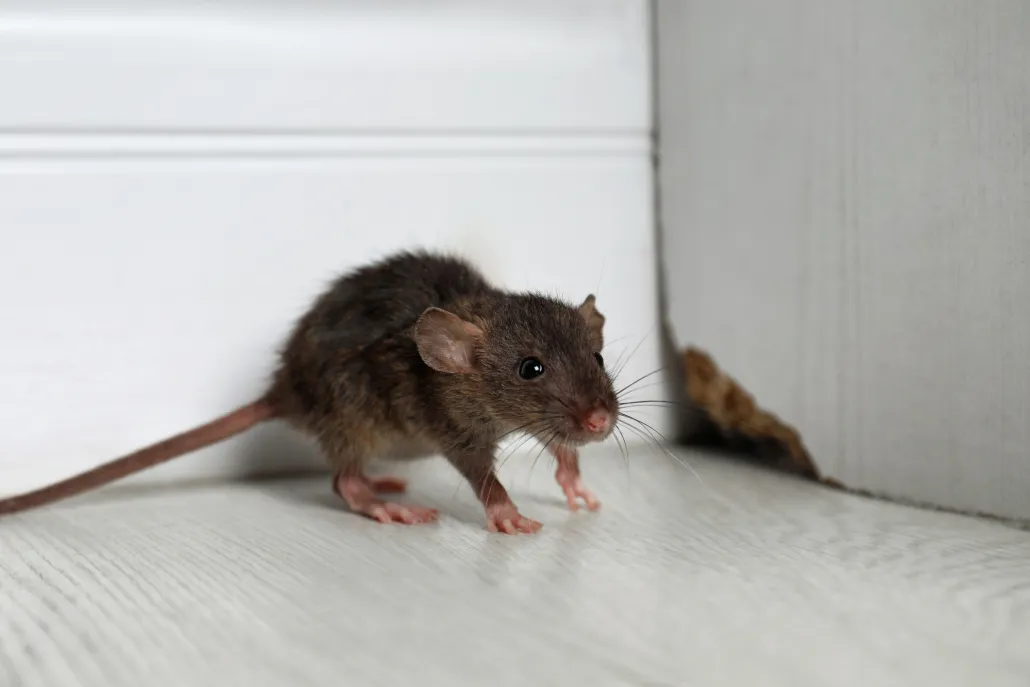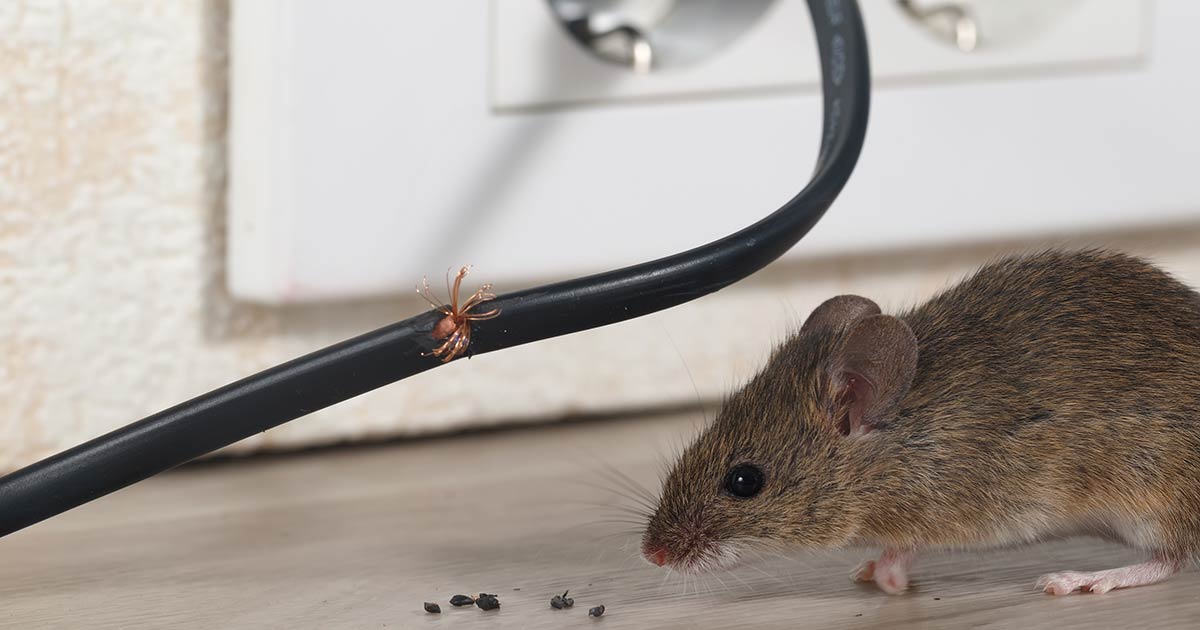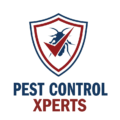Florida’s subtropical climate—featuring warm temperatures, abundant moisture, and mild winters—can be as appealing to rodents as it is to residents and tourists. Rats, mice, and other rodents thrive in regions where food, water, and shelter remain readily available year-round. In coastal areas like Fort Pierce and Vero Beach, factors such as older building styles, easy access to waterways, and frequent human activity create conditions in which rodents can establish nests and reproduce rapidly. These pests can damage property, contaminate food sources, and pose health concerns if not promptly addressed.
This service page outlines why rodents flourish in Florida, how to recognize an infestation, and why working with a professional rodent exterminator can provide the comprehensive solution needed for long-term relief. While a few stray droppings might not seem alarming at first, an unchecked rodent problem can expand at an alarming rate, causing structural harm and potentially spreading illness. By learning the signs and following best practices for prevention and control, homeowners and businesses can protect their properties from rodent-related hazards.
Why Rodents Flourish in Florida

1. Warm, Humid Environment
Rodents typically remain active in milder weather, and Florida rarely experiences harsh, extended cold spells. Even when temperatures dip briefly, the state’s subtropical climate allows rats and mice to continue foraging and breeding. Structures with air-conditioning or heating further moderate temperatures, making it simpler for rodents to find year-round comfort indoors.
2. Accessible Food Sources
From backyard gardens to restaurant dumpsters, Florida’s abundance of food draws in rodents. Many residential properties store pet food or leave bird feeders outside, inadvertently providing a consistent meal supply. Similarly, commercial areas with open trash containers or poorly sealed food-storage facilities invite rodents to linger and multiply.
3. Adequate Water Supply
Humid conditions and frequent rainfall mean that moisture accumulates in crawl spaces, yards, and outdoor containers. Leaky faucets, unsealed pipes, or pooling water around air-conditioning units also offer rodents reliable hydration. This combination of water access and mild climate supports rodent populations through every season.
4. Multiple Nesting Spots
Rats and mice exploit the gaps, cracks, or damaged structures in homes, garages, and other buildings. They often squeeze through dime-sized openings to shelter in attics, walls, or basements. Overgrown shrubbery, cluttered sheds, and debris piles also serve as perfect hideouts. Once established, rodents build nests with soft materials—insulation, cardboard, or shredded fabric—allowing them to raise litters unobserved.
Telltale Signs of Rodents
1. Droppings
Rodent droppings vary in size depending on whether you’re dealing with mice or rats. In either case, fresh droppings are typically dark, shiny, and moist, becoming brittle and dull over time. Finding numerous pellets in pantries, along baseboards, or near trash areas strongly suggests an active infestation.
2. Gnaw Marks
Rodents must chew continuously to keep their teeth from growing too long. You may notice small, rough-edged holes in walls, gnawing on wood fixtures, or even bite marks on plastic and wiring. Damaged food packaging—like cardboard boxes or plastic bags—also indicates rodent tampering.
3. Nocturnal Noises
Rats and mice tend to be most active at night. If you hear scurrying, squeaking, or scratching from the ceiling, behind walls, or near the floor at odd hours, rodents are likely exploring their surroundings. Larger rodents might also produce audible thumping sounds if they run across support beams or in attic spaces.
4. Grease Trails or Smudge Marks
Rats often follow consistent travel paths, hugging walls and corners. Their fur, coated in natural oils, can leave dark, greasy streaks or smudges along these routes. Repeated sightings of such marks may pinpoint heavily used paths.
5. Nests and Shredded Debris
If you stumble upon clumps of paper, fabric, or insulation in secluded spots—like closet corners or attic nooks—rodents may have built a nest there. The presence of droppings or a musty smell around such piles can confirm active use.

Risks of Ignoring Rodents
1. Rapid Reproduction
Rodents can reproduce swiftly, often producing multiple litters each year in warm climates. A small, unnoticed nest can grow into a colony that spreads through wall voids, attics, and shared ducts, complicating control efforts and exacerbating damage.
2. Disease Transmission
Rats and mice may carry pathogens such as salmonella, leptospira, or hantavirus. By contaminating surfaces with droppings or urine, they increase the risk of exposure to these illnesses. Fleas and ticks hitching rides on rodents can introduce additional health concerns.
3. Structural and Electrical Damage
Rodents constantly gnaw on wires, wooden beams, and other structures, potentially leading to short circuits or even fire hazards. Over time, they can compromise insulation in attics or crawl spaces, which affects temperature regulation and increases energy costs.
4. Food Contamination
In both residential kitchens and commercial settings, rodents rummage through pantries, storage bins, and trash, leaving droppings, chew marks, and bacteria in their wake. Restaurants, grocery stores, and food-processing facilities risk lost inventory and health-code violations if rodent problems persist.
5. Spread to Adjacent Properties
In multi-unit buildings or closely spaced neighborhoods, rodents can migrate through shared walls, fences, or communal trash areas. Failing to address an infestation in one unit or structure might cause problems for neighboring homes or businesses.
Why a Professional Exterminator Is Crucial
1. Accurate Pest Identification
While mice and rats are common, Florida also hosts other rodents like roof rats or Norway rats, each requiring unique approaches. A trained rodent exterminator correctly identifies the species, ensuring that the selected baits, traps, or methods will be effective.
2. Comprehensive Inspections
Professionals delve into crawl spaces, attics, storage rooms, and building exteriors to pinpoint droppings, nests, and entry points. This full-scale approach reveals the extent of infestation and uncovers hidden vulnerabilities that enable rodents to thrive.
3. Safe Product Use and Techniques
DIY attempts may involve indiscriminate use of rodenticides, which can pose risks to children, pets, or local wildlife. Certified exterminators employ targeted products and specialized equipment, placing them in secure locations where rodents, rather than unintended creatures, consume them.
4. Customized Treatment Plans
Various rodent species, building layouts, and infestation levels demand different strategies. A professional exterminator creates a tailored plan—employing traps, baits, or integrated pest management tactics—to address the specific challenges of your property.
5. Lasting Prevention and Support
Beyond eliminating current rodents, experts focus on exclusion measures—like sealing gaps, reinforcing door sweeps, or removing clutter. They also schedule follow-up visits or recommend ongoing monitoring to ensure that re-infestations do not occur.
Typical Methods for Rodent Treatments
1. Inspection and Mapping
Exterminators look for droppings, tracks, gnaw marks, and other rodent activity, both indoors and out. They examine potential food sources, moisture issues, and structural openings. This detailed mapping reveals where to place traps or baits for maximum impact.
2. Trapping and Baiting
Common tools include snap traps, multiple-catch traps, or tamper-resistant bait stations. Technicians position these devices along rodent runways, feeding locations, or near entry points. Certain rodenticides contain slow-acting poisons, giving rodents time to return to nests and expose the colony before succumbing.
3. Exclusion Work
In many cases, exterminators highlight or carry out repairs to block rodent entry. This might involve filling cracks around pipes, caulking foundation gaps, or installing mesh screens over vents. Such exclusion prevents new arrivals once existing pests are removed.
4. Sanitation and Cleanup
Clearing food waste, storing items in sealed containers, and removing unnecessary clutter deprive rodents of cover and sustenance. Professionals may also suggest disinfecting or deodorizing areas contaminated by rodent waste to remove lingering odors that could attract future infestations.
5. Monitoring and Follow-Up
Particularly in large buildings or severe cases, ongoing checks confirm whether new droppings appear or if trapped rodents persist. Adjusting traps and bait placements based on these findings ensures thorough eradication. A final inspection typically confirms the site is rodent-free.

Service Areas
Fort Pierce
Located on Florida’s Treasure Coast, Fort Pierce offers historic charm, coastal breezes, and a year-round invitation to outdoor living. Unfortunately, these same features attract rodents seeking reliable food and shelter sources. Whether it’s an older home in the downtown district, a modern condo complex, or a waterfront business, our rodent exterminator services cater to the unique challenges Fort Pierce properties face, delivering rapid and effective solutions.
Vero Beach
Just north of Fort Pierce, Vero Beach balances cultural attractions, upscale residential communities, and scenic beachfronts. Despite this pristine environment, rats and mice can still find ways to invade homes or commercial buildings. Professional rodent control in Vero Beach recognizes factors like landscaping, luxury property layouts, or seasonal occupancy, applying techniques that keep rodents from undermining the area’s appeal and comfort.
Why Our Rodent Treatments Excel
1. Florida-Centric Expertise
By focusing on rodents in the Sunshine State, our team stays current on regional pest behaviors, environmental factors, and best practices. We understand how hot, humid conditions and nearby waterways impact rodent populations in Fort Pierce and Vero Beach specifically, enabling us to design treatments that effectively address these local conditions.
2. Rigorous Inspections and Tailored Plans
We start with a thorough on-site evaluation to identify not only rodents but also the conditions and structures aiding their survival. Based on these findings, we craft a plan that targets rodent hotspots and corrects the vulnerabilities that let them thrive, ensuring the most efficient path to a rodent-free setting.
3. Emphasis on Occupant Safety
We employ proven products, placing them strategically to minimize risks to humans, pets, and non-target wildlife. Clear instructions on post-treatment precautions or reentry times keep disruptions to a minimum, allowing families or employees to resume their routines with confidence.
4. Education for Ongoing Prevention
Effective rodent control extends beyond a single visit. We educate property owners about proper food storage, sealing entry points, and handling refuse. Should new droppings or sightings occur, our team offers follow-up services and advice to maintain a rodent-free environment.
5. Prompt Service and Comprehensive Results
Rodent populations can escalate rapidly in Florida’s climate, underscoring the importance of swift intervention. Our timely scheduling and efficient work methods stop infestations before they escalate, ensuring lasting relief and preserving property integrity in the face of rodent threats.
Next Steps
If you’ve seen droppings, heard nighttime rustling within walls, or spotted gnaw marks on food containers, it’s time to act. Contact us to learn more or schedule your service. Proactive steps prevent rodents from multiplying further and reduce the likelihood of structural damage or health hazards.
Our strategies address each stage of the process—identifying rodent types, employing safe yet potent treatments, reinforcing potential entry points, and verifying that every last intruder is removed. Whether you own a single-family home in Fort Pierce, manage a retail center in Vero Beach, or oversee a hospitality establishment along Florida’s coast, partnering with an experienced rodent exterminator helps ensure long-term peace of mind in your indoor spaces.
Maintaining a Rodent-Free Environment
- Seal Potential Entry Points
Inspect your home or business regularly for cracks, gaps, or broken vents that rodents could exploit. Use steel wool, caulk, or appropriate sealants to block these openings, making it harder for pests to reenter. - Practice Proper Food and Waste Management
Store dry goods in sturdy, sealed containers. Clean up spills immediately, dispose of trash consistently, and keep outdoor bins closed. Limiting easy food access is one of the most effective ways to discourage rodents. - Eliminate Moisture Sources
Fix leaky faucets, repair dripping air-conditioning units, and ensure downspouts direct water away from foundations. Reducing standing water around the property removes a vital resource for rats and mice. - Clear Clutter and Debris
Stacks of paper, cardboard boxes, or yard clippings supply rodents with nesting materials and concealment. Periodic cleanouts of storage areas, garages, or sheds help deprive them of these hiding spots. - Monitor Pet Food and Bedding
Avoid leaving pet food out overnight, and store it in sealed containers. Clean or replace bedding frequently—fleas and ticks may also follow rodents indoors, compounding the pest problem. - Stay Vigilant for Early Signs
Place traps or bait stations periodically in discreet areas to catch any wandering rodents before an infestation takes hold. If you spot new droppings or gnaw marks, act quickly or consult a professional to handle the situation.
By combining these maintenance steps with specialized rodent exterminator services, property owners in Fort Pierce and Vero Beach can create environments that rodents find inhospitable. Although Florida’s climate favors year-round pest activity, a well-informed and proactive approach can keep rats and mice at bay, protecting both property and occupants from the complications these unwanted intruders bring.
